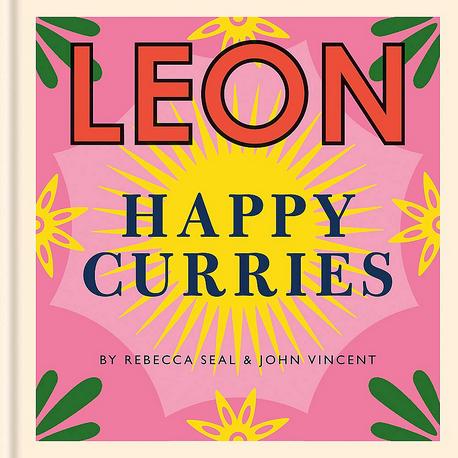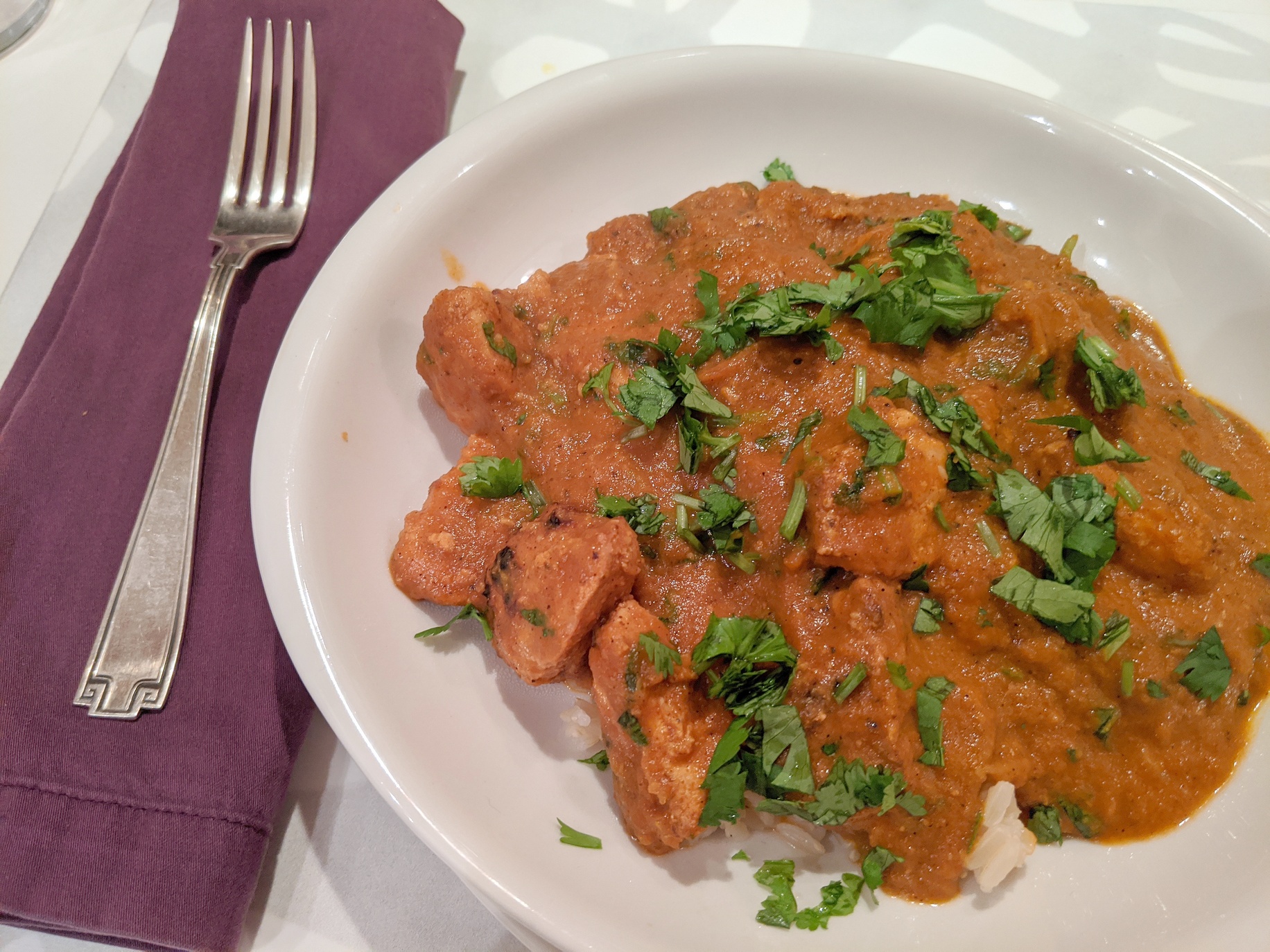 Between the ubiquitous Gordon Ramsey and ‶The Great British Baking Show″ on PBS, the long-battered reputation of British food is enjoying something of a rehabilitation. Moreover, the LEON restaurants, which launched in London in 2004, inoculated British cuisine with the idea that healthy eating and fast food were not necessarily mutually exclusive. The chain spread its gospel of ‶Naturally Fast Food″ to Washington, D.C., in 2018 and has started building more in the capital region. By our count, LEON Happy Curries (Octopus Publishing, London, $19.99) is the eighth cookbook in the LEON series showing how to replicate the restaurant’s dishes and philosophy at home.
Between the ubiquitous Gordon Ramsey and ‶The Great British Baking Show″ on PBS, the long-battered reputation of British food is enjoying something of a rehabilitation. Moreover, the LEON restaurants, which launched in London in 2004, inoculated British cuisine with the idea that healthy eating and fast food were not necessarily mutually exclusive. The chain spread its gospel of ‶Naturally Fast Food″ to Washington, D.C., in 2018 and has started building more in the capital region. By our count, LEON Happy Curries (Octopus Publishing, London, $19.99) is the eighth cookbook in the LEON series showing how to replicate the restaurant’s dishes and philosophy at home.
But this book is a little different than the earlier ones. It represents the magnificent fusion of a homely European cuisine with influences as diverse as India, China, the Caribbean, and sub-Saharan Africa. As authors Rebecca Seal and John Vincent note in their introduction, there is no such thing as ‶curry″ in South and Southeast Asia. Likewise, ‶curry powder″ appears to be a British concoction designed to mimic the multitude of garam masala spice mixes found in South Asia.
That said, some of the most interesting curries in the world hail from Great Britain, where the flavors of Asia and the Caribbean have become mainstream thanks to immigration from former colonies—and the tastes that professional soldiers developed during decades stationed abroad. Curries may represent one of the great examples of ‶bringing the taste of travel back home.″
That hybridization probably reaches its zenith in Chicken Tikka Masala, one of the most ‶old-fashioned″ of the curry shop dishes. Here’s the LEON Happy Curries version, complete with the introduction that highlights its convoluted history. It’s exceptionally tasty.
1960s CHICKEN TIKKA MASALA
Serves 4
Prep Time: 25 Mins
Marinating Time: 1-24 Hours
Cook Time: 45 Mins
Chicken tikka, peshwari naan, pappadams and mango chutney made up the first Indian meal John ever ate, in a tandoori house opposite the Old Bailey in London, aged 14. After growing up on spaghetti bolognaise and shepherd’s pie, it was revelatory.
Is tikka masala from Glasgow? Or the Punjab? Or Delhi? Was it invented by a Bangladeshi chef in London in the 1960s? Or did the original recipe involve cream of tomato soup, because a Scottish bus driver sent back a plate of chicken tikka he thought was too dry? There are so many stories—and no one knows for sure—but whatever its history, it is one of the most popular curries in Britain and has been for decades. We’d like to thank Madhur Jaffrey and Felicity Cloake—both their recipes played a part in the creation of this one.
You can use this recipe to make a vegetarian or vegan version of tikka masala. Simply substitute the meat with extra-firm tofu or cauliflower, zucchini, or peppers, and use non-dairy full-fat yogurt (coconut or soy work well) in place of both the dairy yogurt and cream. Fish eaters can make this with firm fish such as salmon, but cut the marinating time to 15 minutes.
 FOR THE MARINADE
FOR THE MARINADE
2 tablespoons freshly squeezed lemon juice
2 tablespoons whole-milk plain yogurt
3/4-inch piece of ginger, finely grated
1 clove of garlic, crushed
1/4 teaspoon chili powder
1/2 teaspoon sweet smoked paprika
salt and freshly ground black pepper
FOR THE CURRY
1 3/4 pounds boneless, skinless chicken breast, cut into rough 1-inch chunks
1 tablespoon neutral cooking oil
3 onions, finely chopped
4 cloves of garlic, crushed
1 1/2-inch piece of ginger, finely grated
2 teaspoons tomato paste
seeds from 4 green cardamom pods, ground in a mortar and pestle
1 teaspoon ground coriander
2 teaspoons paprika
1 teaspoon sweet smoked paprika
1/2 teaspoon ground cinnamon
1 teaspoon ground cumin
2 teaspoons garam masala (curry powder)
1/4-1/2 teaspoon chili powder, to taste
14 ounces diced tomatoes
2 1/2 cups water
salt and freshly ground black pepper
3-5 tablespoons light cream
a big handful of fresh cilantro leaves
warm naan to serve
Mix the marinade ingredients together in a bowl and season well with salt and pepper. Use your hands to work the marinade into the chicken, then cover and refrigerate 1-24 hours.
Heat the oil in a large heavy saucepan over a medium heat, add the onions, and gently sauté until soft and beginning to brown, about 8 minutes. Add the garlic, ginger, and tomato paste and cook for a further 3-4 minutes, stirring often.
Add the ground cardamom seeds, ground coriander, paprika, smoked paprika, cinnamon, cumin, garam masala, chili powder, and diced tomatoes to the pan. Cook, stirring and squashing the tomatoes, for about 10 minutes, until the sauce is really thick. Add the water, a generous pinch of salt, and some freshly ground black pepper and bring to a simmer. Cook for about 15 minutes, until the sauce has reduced—it shouldn’t be wet, so continue to reduce if necessary.
 Meanwhile, heat the broiler. Remove the chicken from the marinade, but don’t scrape it off. You can thread the meat onto skewers or cook it resting on a rack in a baking tray (lined with foil for easier cleaning). Place the meat under the broiler, about 4 inches away from the heat, and cook for about 8 minutes on each side, until just charred on the edges. (See photo at right.)
Meanwhile, heat the broiler. Remove the chicken from the marinade, but don’t scrape it off. You can thread the meat onto skewers or cook it resting on a rack in a baking tray (lined with foil for easier cleaning). Place the meat under the broiler, about 4 inches away from the heat, and cook for about 8 minutes on each side, until just charred on the edges. (See photo at right.)
While the chicken is cooking, remove the sauce from the heat and add 3 tablespoons of the cream. Taste and add more if wished—it should be creamy, but not overwhelmingly so. Carefully purée the sauce in a blender or food processor until smooth. Work in batches if necessary, as some blenders may explode if overfilled with hot liquid. Transfer the sauce back to the pan and keep warm.
When the chicken is ready, stir it into the sauce and cook for a further 5 minutes. Remove from the heat and stir in half of the cilantro leaves. Serve, sprinkled with the remaining cilantro, with naan breads (and three or four other indulgent curries…).
